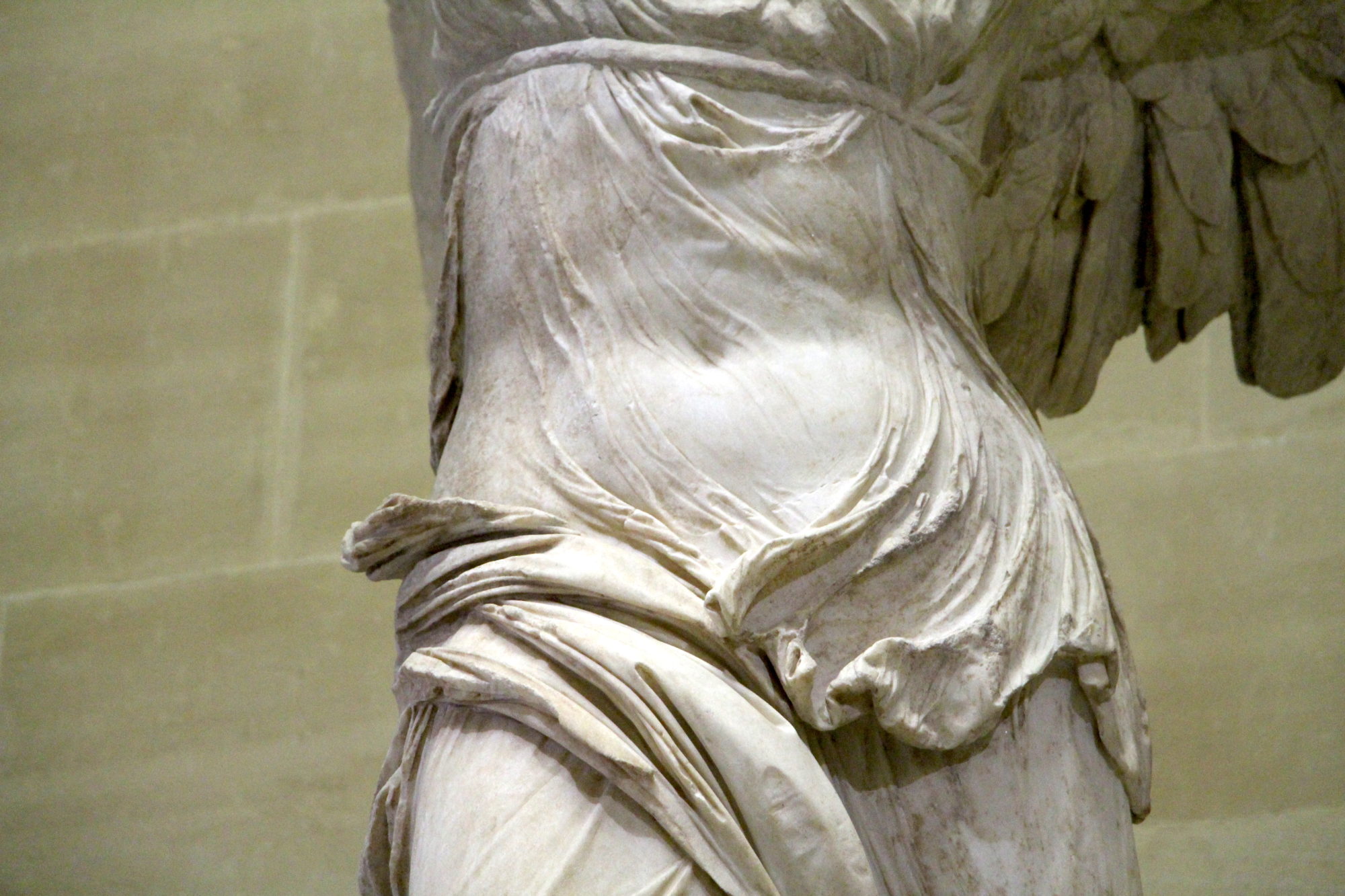1. This is one of the most famous sculptures in the Louvre, though it might take you a second to recognize it. This is the torso of Winged Victory, also known as Nike of Samothrace (Nike is, in fact, the Greek goddess of victory. You can see where the shoe brand got its inspiration). I love this detail because you really see the artistry: the statue was meant to be standing on the prow of a ship, and the wind and water blasting towards her are visible in every fold of the fabric. It’s also a clever way for the Hellenistic sculpture to reveal some of her forms: the Greeks had a really complex relationship with female nudes, and even as late as the 2nd century BC, female goddesses were always at least partially draped. This is an interesting workaround.
https://www.flickr.com/photos/42807215@N00/35962193473/in/dateposted-public/
2. I am what the French call a dix-neuvièmiste, or a specialist in the 19th century. While most of what you find in the Louvre predates this period, there are a few details from the post-Revolutionary era, notably this painting on the ceiling above the Mollien staircase. This is an allegory of liberty, depicted as a woman: you can see the resemblance with Delacroix’s “Liberty Leading the People” (which is hanging in the gallery just adjacent), but you can also see one detail that would find its way into the Statue of Liberty, given to the Americans by the French: the pointed crown. Of course, when gifting such a statue to the Puritanical Americans, the French made sure she was fully draped.
https://www.flickr.com/photos/42807215@N00/35962188993/in/dateposted-public/
3. The Louvre was originally not a museum but the palace of the French kings: every king from Francis I through Louis XIV lived here, and most kings added a detail or two to the structure. This carving above a doorway was added by Henry II, the son of Francis I, who was married to Catherine de Medici. He was looking for a unique insignia, and he came up with this: an H with two interlocked Cs for Catherine. What most people noticed is that it looks far more like two Ds than two Cs – and this is apt: Henry II’s long-time mistress and the love of his life was a woman called Diane de Poitiers. (If you visit the Loire Valley château of Chenonceau, you’ll learn even more about the competition between these two women for the king’s favor.)
4. Before King Louis XIV left the Louvre in favor of Versailles, he began building a gallery of Apollo (the sun god was intended as an allegory of the Sun King himself). The gallery was abandoned, but it has since been finished and is home to what remains of the French crown jewels as well as a few rather intriguing pieces from the royal and imperial arts de table. This lapis lazuli gravy boat is frankly terrifying, but I kind of love it.
https://www.flickr.com/photos/42807215@N00/35962187613/in/dateposted-public/
5. In the 1980s, French president François Mitterand undertook a project to renovate the Louvre, commissioning the now-famous glass pyramid entrance and creating an underground space that would allow the three major wings to be connected. As the digging took place, the original foundations for the medieval Louvre were uncovered, and the museum decided to put them on display. You can walk through a portion of the moat underneath the Louvre itself, and if you look closely, you’ll see carvings on some of the stones. These are not graffiti, but rather the builders’ way of showing who had placed each stone: each builder had a symbol (such as this heart or a small cross), and at the end of the day, the symbols would be counted so that the builders could be paid.
With this visit to the Louvre, I also wanted to take the opportunity to make a little announcement: I’m now working with a colleague of mine offering private guided tours of Paris. Our company is called Paris Uncovered, and we offer private walking tours, food tours, and museum tours too. Hope we can help you out when you visit!

